tue3p.jpg

WWOZ makes 35 this week! And, oh, what a ride it's been-- from our humble beginnings in a small alcove above the stage at Tipitina's to our treehouse spot in Armstrong Park to our latest location in the French Market Building along the Mississippi River, WWOZ has been proud to bring the sounds of New Orleans to the world for decades. This year was an especially good one with a number of exciting developments for the station, including the launch of our 2-week streaming archive. The archive allows listeners to tune in or replay their favorite shows for two weeks after the original air date.
WWOZ first went on the air as New Orleans' community radio station in 1980, after years of work from dedicated volunteers and music lovers, led by brothers Jerry and Walter Brock. The call letters WWOZ reference the Wonderful Wizard of Oz, specifically the line, "Pay no attention to the man behind the curtain." The content would be the focus of the station.
The Brocks had heard New Orleans music in recordings from Jelly Roll Morton to Dr. John, but were amazed to find a vibrant live music scene in the city's streets and night clubs. At that time, Brock says, local music was barely heard on the radio, except maybe a few songs around Mardi Gras. They worked hard and closely with a number of community radio activists to secure the license and on December 4, 1980, the federal permit was granted. WWOZ had to be on the air within 24 hours. For the first few weeks, the Brocks and others would tape programs at home and race out to the transmitter shack to get them on air.
Engineer Ken Devine was instrumental to the station in these early days, as was jack-of-many-trades Eric Glaser. Together with the Brocks and other volunteers, they set up shop in the space above Tipitina's, founded just a few years earlier.
For the first months on air, the staff would indeed occasionally lower a mic through the floor into the club, recording live music for broadcast. There were times when 'OZ hosts would set up in Tip's to interview the performers before their set began. Within six months, Brock says, the station got its first real broadcasting equipment and the ‘OZilians went on-air in a slightly more refined manner.
Early ‘OZ supporters included local luminaries like Al Rose, Ellis Marsalis, Kidd Jordan and Bunny Matthews, who all did extensive work with the station before it even went on the air.
Show hosts like the Duke of Paducah brought in Ernie K-Doe and Dave Bartholomew for interviews and performances. Earl King was a regular at the station, and James Booker was featured one Saturday afternoon at the piano from the stage at Tip's, telling stories from his life between songs.
Soon Bobby Mitchell and Ernie K-Doe had their own weekly programs ("Burn, K-Doe, burn!"). Friends and families of musicians often would call to say thanks and sometimes to add to or correct what the record collectors were saying, a circumstance that happily continues today. An 'OZ family grew, as an extension of the community of New Orleans.
In 1984, WWOZ moved out of the cramped space above Tipitina's and into a 3-room wood building in Louis Armstrong Park, part of the Tremé neighborhood. From here, DJs heard the sounds of school marching bands tooting their horns and beating their drums after class, and they roosted close to the music clubs and street performers of Rampart Street and the French Quarter.
By 1987, the financially-strapped Nora Blatch Foundation, which had established WWOZ in 1980, turned the station's license over to the Friends of WWOZ, Inc., a not-for-profit 501(c)(3) corporation established by the New Orleans Jazz & Heritage Festival Foundation for the purpose of operating WWOZ. Since that time, the Foundation has been the guarantor of WWOZ's financial and operational stability.
The 1990s brought a number of changes for WWOZ, including the launch of our live stream and live on-site broadcasts In the early from major events like the New Orleans Jazz & Heritage Festival. We now bring at least a dozen live broadcasts to our listeners each year, including the Crescent City Blues & BBQ Fest; episodes of Cuttin' Class, our series of live in-studio performances by middle and high school age students from the Greater New Orleans area; The Jazz Foundation of America's A Great Night in Harlem; and many special performances from venues throughout New Orleans.
Before the end of 2005, after Hurricane Katrina, WWOZ moved to its current location inside the French Market Building on the edge of the French Quarter, bordered by the Mississippi River. Here, 'OZ continues to share the music, culture, and heritage of New Orleans with a worldwide audience. Listen in.
Another look back at WWOZ, released in honor of our 33rd birthday in 2013
Learn more about WWOZ's founding and history
Behind the sorbet, Mango Freeze, our famous and tastiest treat




























